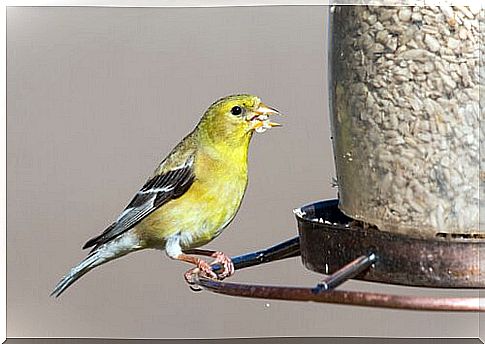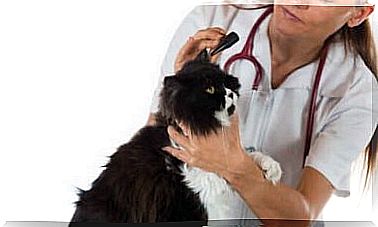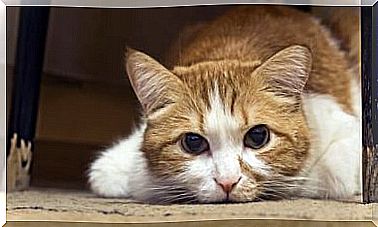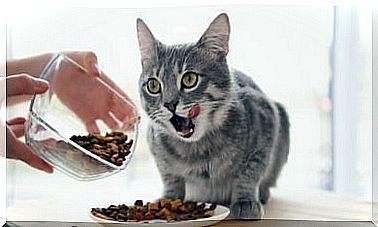Goldfinch As A Pet

The goldfinch, whose scientific name is Carduelis carduelis , is a cheerful bird that brings joy to any home. Above all, it is its bright colors and lively chirping that brighten up every house. This bird requires special care as it has a nervous temperament and sensitive personality. But a goldfinch as a pet is wonderful.
Below are some tips on how to best take care of a goldfinch as a pet . Your pet is sure to be happy if you follow these detailed tips.
The goldfinch as a pet
Goldfinches need space to fly. It is a good idea to purchase a 50 cm high cage that has perches. The bird can rest on these after flying. That way he will be able to move his wings and feet, and he will feel free enough to live comfortably.
The cage should be in a well-ventilated area but not in direct sunlight. Choose a location that is protected from currents of hot air or steam. Places like the kitchen or bathroom are not well suited.
The goldfinch’s cage should be out of the reach of dangerous animals such as rats or other rodents. Likewise, don’t allow your goldfinch to have too much contact with wild birds. Even if the other birds don’t harm it, they can transmit parasites or diseases.
Sensible nutrition for the goldfinch
Goldfinches are granivores, which means that their beaks and digestive system are designed to eat different types of seeds.
Unlike other granivores, the goldfinch’s diet has to be varied in order to meet its nutritional needs. Your goldfinch’s nutritional needs depend on its age, environmental conditions and the time of year.
Goldfinches like the following: bird seeds, poppy seeds, hazelnut, hemp seeds, canola, black and white lettuce, flax seeds, sesame seeds, and perilla. You are able to eat fruits such as apricots, plums, figs, strawberries, apples, oranges, pears, bananas and watermelons, among others.

fruits and vegetables
The goldfinch can also eat vegetables such as tomatoes, lettuce, carrots, broccoli, spinach and cucumbers.
Make sure that any fruits and vegetables are well washed before feeding them to your goldfinch. You need to make sure they haven’t come into contact with pesticides or insecticide. This could damage your bird’s health. To get rid of any residue, put the vegetables in a mixture of sodium bicarbonate and water. After a few hours, take them out and wash them off again with water.
Fresh feed should be added several times a day. This is the best way to prevent the goldfinch from eating anything that’s already starting to rot.
During the renewal of the plumage, the goldfinch needs a complete multivitamin. This supplement should be high in protein to facilitate feather regeneration. You can also give your goldfinch wheat germ, soy or yeast.
There are other special recommendations, depending on the temperature. In a cold environment, it is a good idea to increase your caloric intake by using oil seeds such as sunflower or flax seeds.
Hygiene habits
Tips for keeping a goldfinch as a pet would not be complete without advice on hygiene. These will help reduce the risk of infection or disease in your bird.
- Remove feces from the cage daily.
- Change the water regularly or use a device that will keep the water fresh.
- Blow out the feed container daily to remove debris and empty seeds.
- Prevent birdseed from falling to the bottom of the cage to avoid contact with feces.
- Thoroughly clean the cage and each perch once a week
Goldfinches need to be dewormed as often as the veterinarian advises. It is important that you use the correct type of parasite removal and prevention, based on the age, size, and physical condition of your pet. Most pet stores have powder, spray, or oil for it.
Pay attention to the temperature
This is one of the most difficult tips to follow when it comes to caring for your goldfinch. You cannot control weather changes over the seasons. However, you can do everything possible to control the temperature in your home. Abrupt changes in temperature affect the goldfinch’s immune system, as this makes it easier for them to get sick. They are particularly sensitive to high temperatures.









